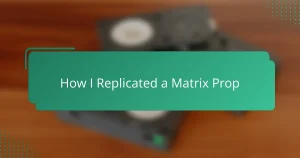Key takeaways
- Science fiction props enhance storytelling by immersing viewers in futuristic worlds, requiring thoughtful design and detail attention.
- Choosing appropriate materials and tools is crucial for creating authentic-looking props, impacting their usability and aesthetic appeal.
- Weathering techniques breathe life into props, making them believable relics of their fictional universes, while also requiring careful experimentation.
- The display of finished props can significantly enhance their visual impact, showcasing the creative journey behind their creation.

Understanding Science Fiction Props
Science fiction props are more than just objects; they are tangible fragments of imagination brought to life. When I first held a replica blaster, I was struck by how every detail—from the weight to the weathering—makes the story feel real. Have you ever wondered why a simple prop can evoke such a strong emotional response?
In my experience, understanding these props means appreciating their role as storytelling tools. They aren’t just cool gadgets; they shape the world around the characters and invite viewers to believe in impossible futures. That’s why crafting them requires careful attention to both design and context.
What fascinates me most is how science fiction props blend creativity with function. They often hint at advanced technology or alien cultures, sparking curiosity and inspiring us to imagine what could be. Don’t you think that blend of art and science is what makes them truly captivating?
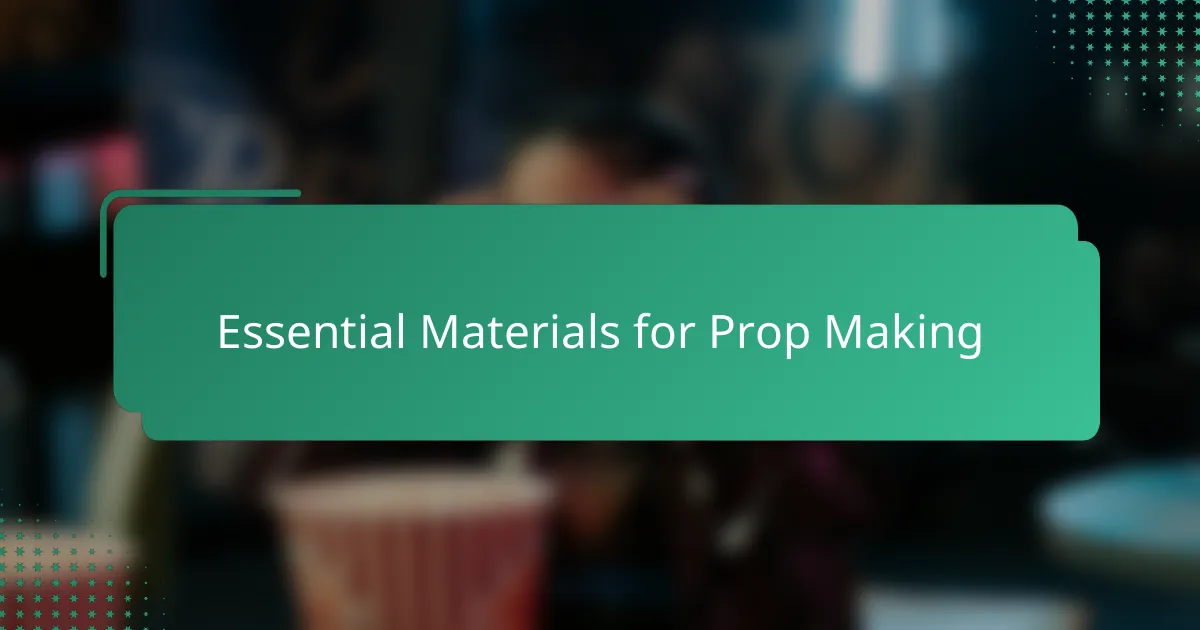
Essential Materials for Prop Making
Working on my Blade Runner prop, I quickly realized that choosing the right materials was half the battle. Plastics like PVC and ABS offered lightweight durability, which made handling the prop comfortable during long shoots. Have you ever held something that felt too fragile or heavy? That immediately breaks the illusion.
Metal pieces and aluminum sheets were also essential for adding authenticity. Their cold texture and subtle weight gave the blade runner prop that industrial, lived-in look that’s so iconic. I remember sanding down those edges for hours, feeling a growing connection to the prop with each pass.
Then there’s paint and weathering supplies—real game changers for breathing life into raw materials. Using washes and dry brushing techniques helped me simulate grime and wear, making the prop feel like it had a story etched into every scratch. Isn’t it amazing how tiny details can transform plastic and metal into something truly believable?

Tools Required for Prop Crafting
When I started building the Blade Runner prop, I quickly learned that having the right tools was just as important as the materials themselves. Basic hand tools like precision knives and files became my best friends—they allowed me to sculpt and refine tiny details that really made the piece stand out. Have you ever felt that satisfying click when a blade slices smoothly through plastic? That moment is oddly rewarding and keeps you motivated.
Power tools also played a significant role. A rotary tool, for example, helped me shape metal components and add intricate engravings that would have been impossible with just hand tools. Using it required patience and a steady hand, but the control it gave me was worth every minute of practice. I found myself almost meditating during those sessions, lost in the repetitive motion.
Of course, measuring and marking tools are underrated but crucial. Calipers and rulers kept my work precise, preventing costly mistakes that could ruin the prop’s authenticity. Isn’t it ironic that such simple devices can be the foundation for creating objects that look so futuristic and complex? They reminded me that attention to detail starts even before the cutting begins.
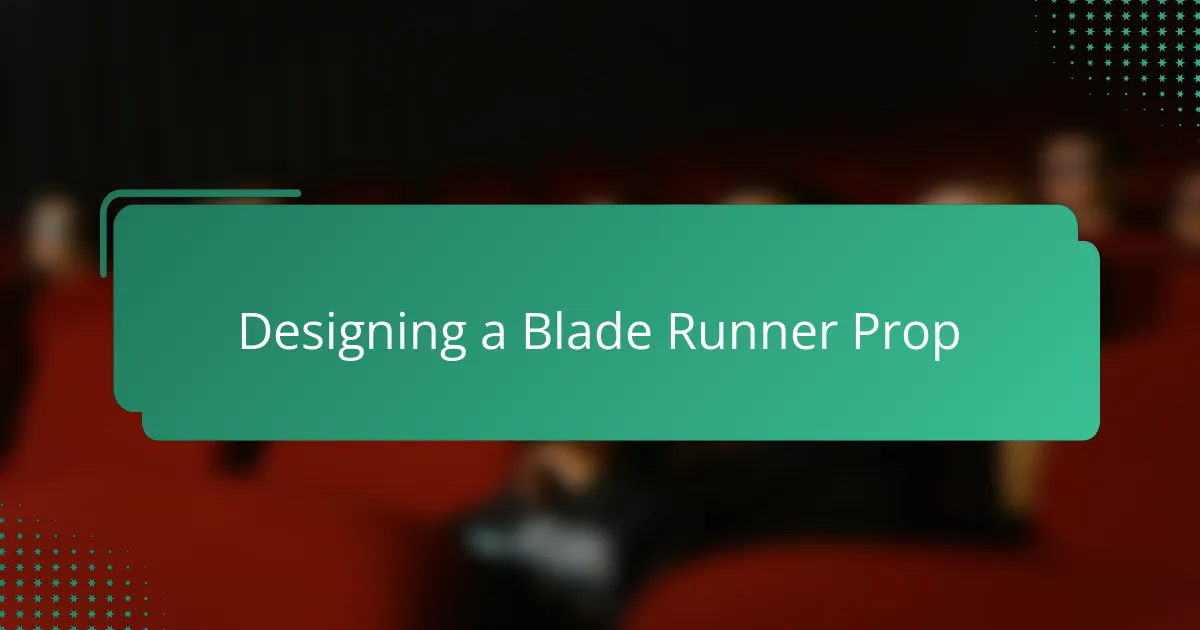
Designing a Blade Runner Prop
Designing a Blade Runner prop felt like stepping into Ridley Scott’s dystopian world, where every line and curve needs to speak the language of that gritty future. I found myself obsessing over the balance between sleek futurism and worn-out realism—even tiny asymmetries added to that lived-in feel. Have you noticed how a perfectly clean prop often looks less believable in sci-fi? That’s exactly what I aimed to avoid.
It was fascinating to study the original designs and realize how each component hinted at a backstory—why would a Blade Runner carry a weapon with that shape, those buttons, that weight? I tried to capture that mystery by integrating subtle textures and hidden details, knowing that casual viewers might not notice them immediately but would feel their presence subconsciously.
One challenge I encountered was deciding how futuristic the prop should look without losing its functional, grounded aspect. I kept asking myself: Would this tool be practical in a chaotic urban environment? This question guided many design tweaks and kept me grounded in the Blade Runner universe’s gritty realities rather than just creating something flashy.
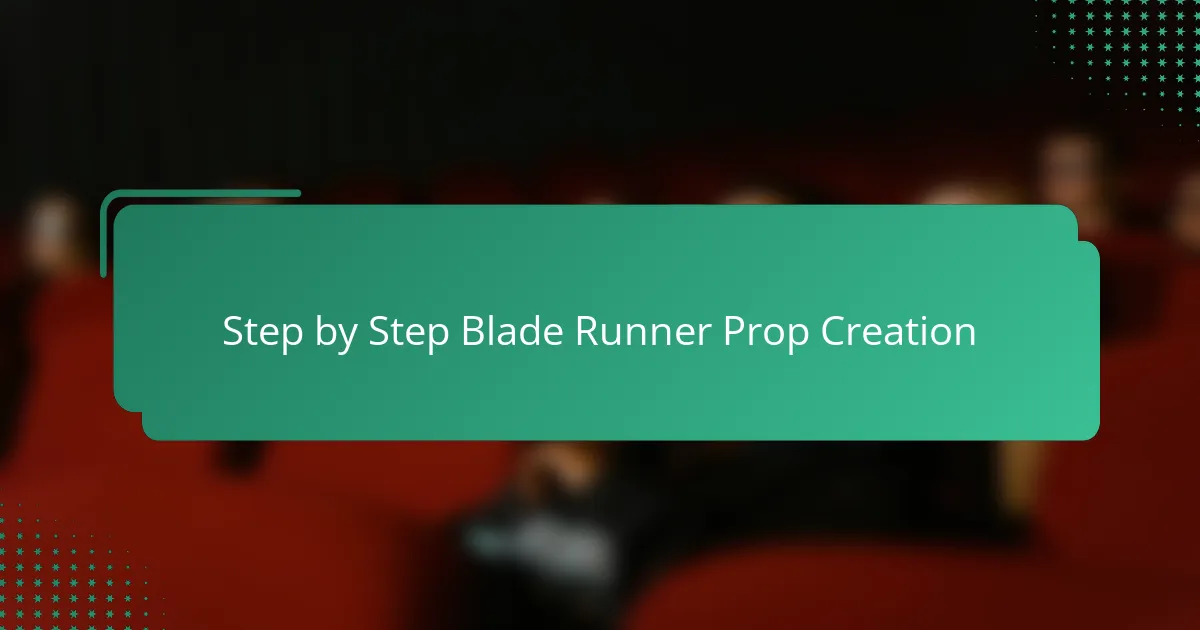
Step by Step Blade Runner Prop Creation
Starting the Blade Runner prop creation was like solving a complex puzzle—each step had to align perfectly. I began by carefully cutting and assembling the base layers, constantly asking myself if the shapes matched the film’s iconic silhouette. Have you ever noticed how the smallest misalignment can throw off the entire look? That meticulous attention kept me grounded throughout the build.
Next came the layering of textures and components—adding vents, screws, and panels one by one. I remember feeling a rush of excitement every time a piece clicked into place, as if the prop was slowly coming to life before my eyes. This step required patience and steady hands, yet it was incredibly rewarding to see the familiar shape emerge from raw materials.
Finally, the weathering process transformed my almost sterile creation into a believable relic of a dystopian world. Using washes and dry brushing, I deliberately introduced scratches and grime, wondering how this prop might’ve been handled by a hard-edged Blade Runner chasing replicants in the rain-soaked streets. Isn’t it fascinating how a few smudges can carry an entire story?
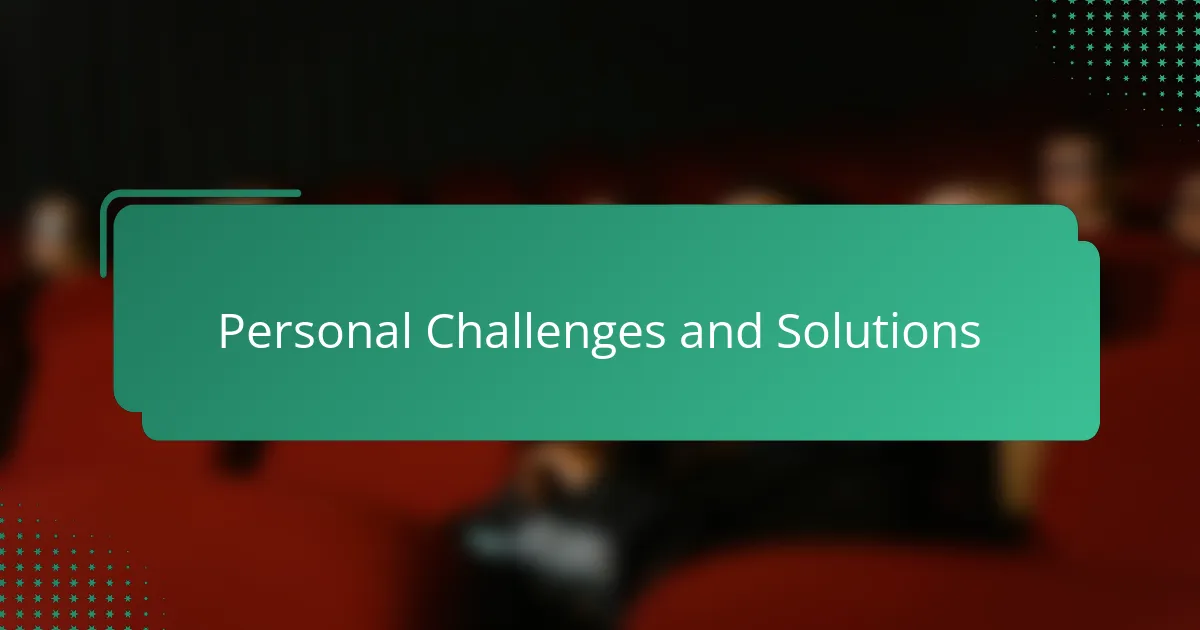
Personal Challenges and Solutions
One challenge that kept cropping up was mastering the delicate balance between patience and precision. There were moments when frustration crept in—like when a carefully cut piece didn’t fit just right or when the paint chipped unexpectedly. Have you ever experienced that sinking feeling when hours of work suddenly seem undone? What helped me was stepping back, breathing deeply, and reminding myself that these hurdles are part of crafting something truly special.
Another hurdle was dealing with limited workspace and juggling tools efficiently. I found myself improvising little organizers and changing my workflow on the fly to keep everything within reach and avoid losing tiny screws or parts. It became a lesson not just in building a prop but in creating a creative environment that fosters focus and flow. Don’t you think the setup around us can be just as important as the work at hand?
Finally, mastering weathering techniques was tougher than I initially thought. Replicating realistic wear without overdoing it demanded multiple tests and constant tweaking. I often questioned if I was capturing the gritty, lived-in feel or just making a mess. Through trial and error, I learned that subtlety wins—sometimes less truly is more. This process taught me to trust my instincts and let the prop tell its own story naturally.
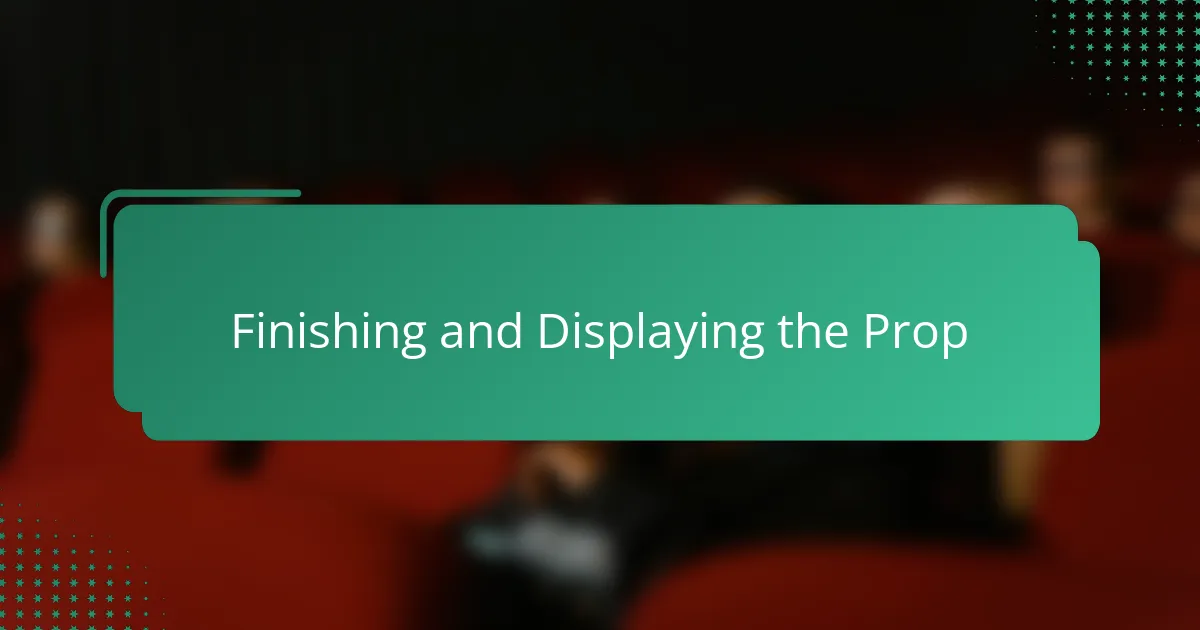
Finishing and Displaying the Prop
Finishing the Blade Runner prop was where all the hours of work finally came together. Applying clear coats sealed in the paint and weathering, protecting those tiny, painstaking details I’d grown attached to. Have you ever felt that mix of relief and pride when a project suddenly looks “done” but also alive with character?
Displaying the prop became its own rewarding challenge. I experimented with lighting to highlight the polished metal while casting shadows over the worn textures—something that really brought out the gritty essence of the Blade Runner universe. It made me realize how much atmosphere matters in showing off a piece like this.
I also found that a simple stand, tailored just right, gave the prop a sense of presence as if it belonged in a dystopian collector’s cabinet. Watching it sit there, I felt a connection to both the film and my own journey crafting it—a tangible reminder that science fiction dreams can be held in your hands. Doesn’t that make the effort feel all the more worthwhile?

